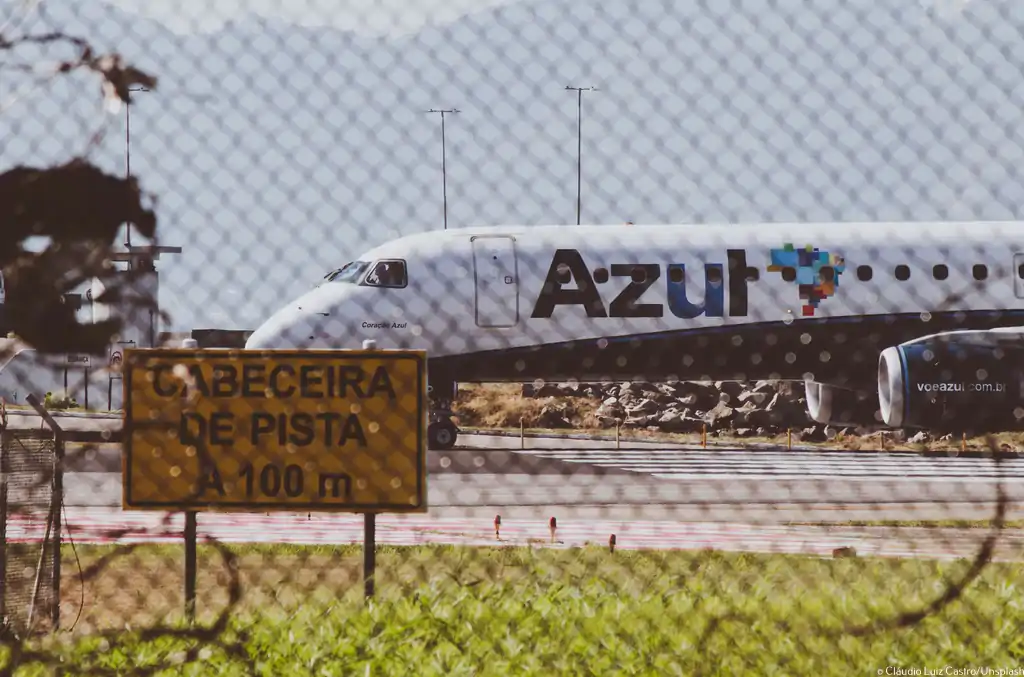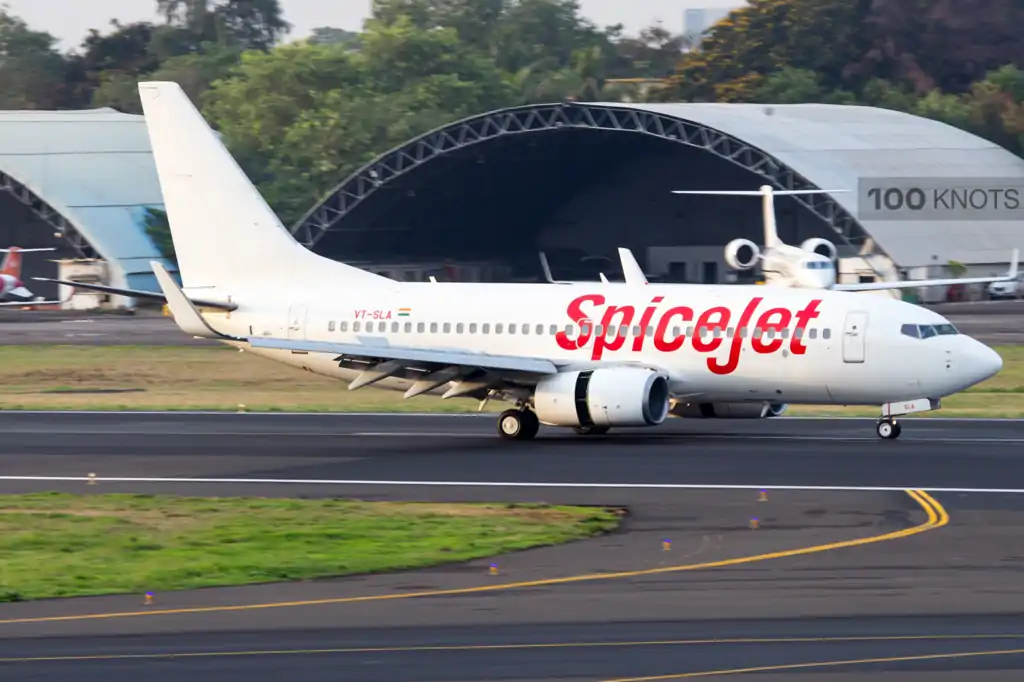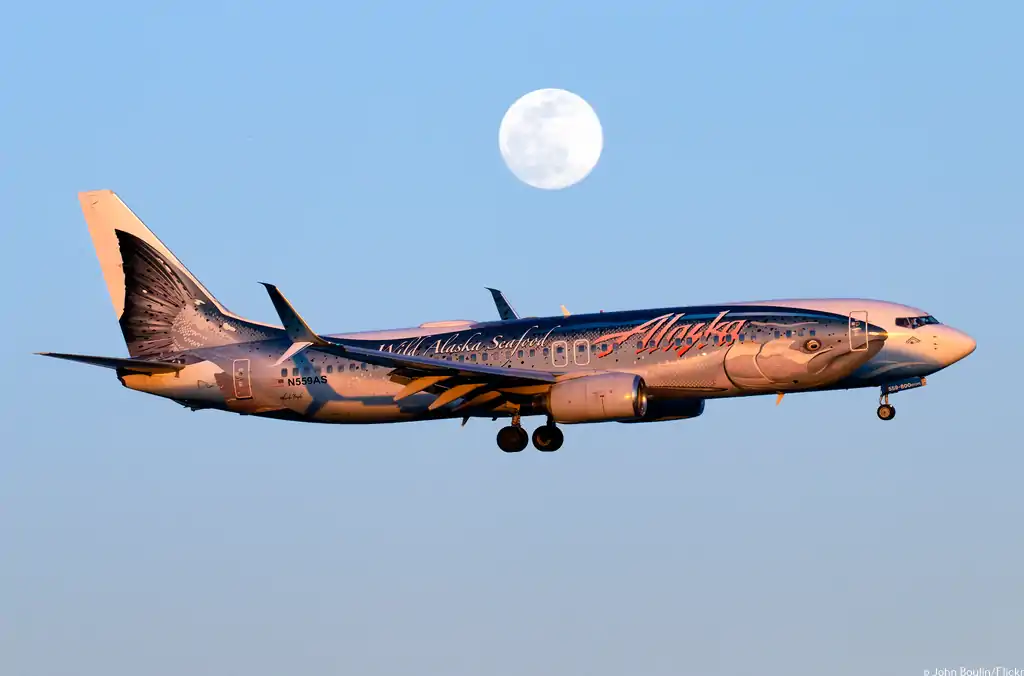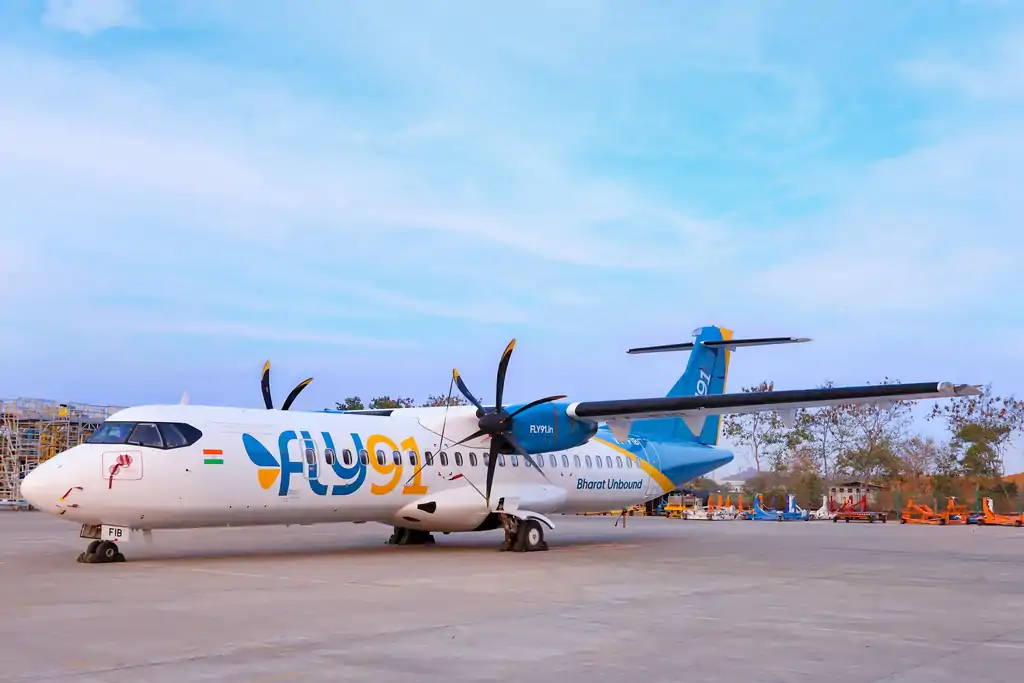In a dynamic aviation landscape, SpiceJet continues to make strategic moves aimed at bolstering its operations and solidifying its position in the market. With recent developments including aircraft acquisitions, route expansions, and financial settlements, the budget carrier demonstrates resilience and foresight in navigating challenges and seizing opportunities.
Expansion in Fleet and Operations
SpiceJet's recent acquisition of two A320-200s on an ACMI (Aircraft, Crew, Maintenance, and Insurance) basis for the IATA 2024 northern summer season marks a significant step in its fleet expansion strategy. These aircraft will cater to various routes, enhancing connectivity and flexibility for travelers. Notably, one A320 will operate a multi-leg route spanning Ahmedabad, Goa, Ayodhya International, and Dubai International, while the other will serve routes connecting Ahmedabad, Chennai, Hyderabad International, and Varanasi.
Moreover, SpiceJet's decision to wet-lease two A340s for its 2024 Hajj flights underscores its commitment to meeting seasonal demands and ensuring seamless travel experiences for pilgrims.
Fleet Profile and Utilization
While SpiceJet primarily operates Boeing aircraft, including a mix of B737 models and B737-700(BDSF)s for cargo operations, its recent ventures into leasing Airbus aircraft demonstrate its agility in meeting diverse operational requirements. With a fleet comprising both owned and leased aircraft, SpiceJet optimizes its resources to efficiently serve domestic and international routes.
Additionally, the acquisition of full ownership of thirteen DHC-8-Q400s through a settlement with Export Development Canada reflects SpiceJet's strategic financial management. This landmark agreement not only resolves outstanding liabilities but also empowers the airline with greater control over its fleet. By refurbishing and reintroducing grounded Q400s into service, SpiceJet aims to expand its regional and UDAN (Ude Desh ka Aam Nagrik) route network, thereby tapping into underserved markets and enhancing connectivity across India.
Financial Implications and Future Prospects
The settlement with Export Development Canada represents a significant milestone for SpiceJet, alleviating financial burdens and unlocking long-term cost savings. With liabilities amounting to almost USD 91 million resolved, SpiceJet's managing director, Ajay Singh, emphasizes the positive impact on the airline's financial health and operational efficiency. The freed-up resources enable SpiceJet to invest in fleet modernization, route development, and customer-centric initiatives, positioning the airline for sustained growth and competitiveness in the industry.
Conclusion
SpiceJet's recent endeavors exemplify its strategic vision and adaptability in navigating the complexities of the aviation sector. From fleet expansion and route diversification to financial restructuring and operational enhancements, the airline demonstrates resilience and innovation in pursuing growth opportunities while addressing challenges head-on. As SpiceJet continues to evolve and expand its footprint, stakeholders can anticipate further contributions to India's aviation landscape and enhanced travel experiences for passengers.
With Inputs from ch-aviation
Read next
Alaska Air Group finds itself navigating turbulent skies as it grapples with the fallout from the temporary grounding of its Boeing 737 Max 9 fleet. The repercussions extend beyond immediate financial impacts, potentially denting the company's long-term profit growth targets. This article delves into the challenges faced by Alaska Air amid the ongoing saga with Boeing.
Capacity Crunch and Profit Projections
The temporary grounding of its Boeing 737 Max 9 fleet has dealt a significant blow to Alaska Air's operational capacity. This loss of capacity has led the airline to revise its profit growth projections, indicating a potential deviation from its target range of 4% to 8%. Such a setback underscores the profound impact that external factors, such as aircraft grounding, can have on airlines' financial outlooks.
Financial Forecasts vs. Reality
Alaska Air's forecast for the first quarter highlights the discrepancy between its projections and analysts' estimates. Despite anticipating an adjusted loss per share of 55 cents to 45 cents, the actual figures are markedly better, with analysts expecting a loss of $1.18 per share. This variance is attributed in part to unspecified partial compensation received from Boeing following a mid-air incident involving a door plug panel.
Compensation and Consequences
The compensation received from Boeing partially mitigates the financial strain resulting from the mid-air incident and subsequent grounding of MAX 9 jets. However, the impact on earnings remains palpable, with Alaska Air citing a 30 cent-per-share reduction attributable to the temporary grounding. Such financial implications underscore the intricate interplay between airlines and aircraft manufacturers, wherein operational disruptions can reverberate throughout an airline's financial performance.
Uncertainty Looms Over Capacity Expectations
Alaska Air's full-year capacity expectations remain in flux, primarily due to uncertainties surrounding aircraft delivery timings. Heightened scrutiny from regulatory bodies, including the Federal Aviation Administration and the Department of Justice, towards Boeing's operations adds another layer of complexity to the situation. The evolving regulatory landscape underscores the challenges faced by airlines in planning their operations amidst external uncertainties.
Navigating Turbulent Skies
As Alaska Air endeavors to weather these challenges, effective navigation of the current landscape is paramount. The airline must adopt a flexible approach to capacity planning, considering the fluidity of regulatory and operational dynamics. Moreover, maintaining transparent communication with stakeholders, including investors and passengers, is crucial in fostering trust and confidence amid uncertainty.
Conclusion
The confluence of events stemming from the temporary grounding of its Boeing 737 Max 9 fleet presents formidable challenges for Alaska Air Group. Navigating through these challenges requires a strategic approach that balances financial prudence with operational agility. As the airline charts its course forward, it remains to be seen how effectively it can mitigate the impacts on its long-term profitability amidst the turbulence caused by external factors beyond its control.
With Inputs from Reuters
Read next
Europe's Aviation Regulator Calls for Reinforcement Amidst Systemic Risks
Abhishek Nayar
30 Mar 2024

As the aviation industry continues to evolve with technological advancements and increasing complexities, Europe's aviation regulator, the European Union Aviation Safety Agency (EASA), finds itself at a critical juncture. Outgoing acting Executive Director Luc Tytgat has sounded the alarm, highlighting resource constraints and the need for a more substantial role in mitigating systemic risks within the aviation ecosystem.
Resource Struggles Amidst Growing Responsibilities
With a staff of around 800 and a budget of 248 million euros for 2024, EASA faces a daunting challenge in comparison to its U.S. counterpart, the Federal Aviation Administration (FAA), which boasts over 40,000 employees and a budget of nearly $20 billion. Despite its smaller size, EASA shoulders significant responsibilities, particularly in shaping regulations for emerging aviation technologies and addressing evolving threats such as cyberattacks.
Calls for Increased Support & Embracing a Systemic Approach
Tytgat's plea for additional resources comes at a crucial time, just weeks before his retirement and amidst the transition to a new leadership under Florian Guillermet. The upcoming budget discussions and the European Union parliamentary elections present opportunities for EASA to secure the necessary support to bolster its capabilities.
Acknowledging the evolving landscape of aviation, Tytgat emphasizes the importance of adopting a systemic approach to safety. This entails comprehensive oversight of the entire aviation ecosystem, from runways to the skies. EASA aims to enhance its role by collecting and analyzing safety data generated by modern aircraft, enabling proactive measures to prevent accidents.
Pushback and Challenges
Despite EASA's plea, there is pushback from some quarters. Ryanair CEO Michael O'Leary questions the agency's resource allocation, while EasyJet Chief Executive Johan Lundgren highlights Europe's impressive safety record, suggesting that increased oversight may not be necessary. Additionally, the European Commission indicates no immediate plans to modify EASA's remit, citing recent extensions in 2018 to cover areas such as cybersecurity and environmental impact.
Moving Forward & Conclusion
As EASA navigates these challenges, it remains committed to enhancing safety standards and regulatory frameworks to keep pace with technological advancements and emerging threats. The agency's Data4Safety program, set to launch later this year, reflects its proactive stance in leveraging data for enhanced safety measures.
Europe's aviation regulator stands at a crossroads, grappling with resource constraints amidst mounting responsibilities. As stakeholders weigh in on the path forward, it is imperative to prioritize safety and embrace collaborative efforts to address systemic risks in the aviation industry. EASA's call for reinforcement underscores the need for sustained support and strategic investments to ensure the safety and integrity of Europe's skies.
With Inputs from Reuters
Read next
Can Azul's Upward Earnings Revision Weather Air Travel Turbulence in Brazil?
Abhishek Nayar
30 Mar 2024

Brazilian carrier Azul has recently revised its earnings forecast for 2024 upward, despite facing challenges in the aviation industry. The company's optimistic outlook reflects a combination of factors including strong demand, improving fuel prices, fleet expansion, and restructuring efforts. As air travel demand in Latin America's largest economy remains robust, Azul's resilience amidst capacity bottlenecks raises questions about its ability to navigate turbulent skies.
Azul's Upward Earnings Revision
Azul now anticipates earnings before interest, taxes, depreciation, and amortization (EBITDA) of approximately 6.5 billion reais for 2024, marking nearly 25% growth over the previous year. This upward revision, above the initial projection of 6.3 billion reais, underscores the company's confidence in its operational performance and market prospects despite industry challenges.
Factors Driving the Upward Revision
Several key factors contribute to Azul's revised earnings forecast:
- Strong Demand: Azul benefits from robust air travel demand in Brazil, supported by economic recovery and increased mobility.
- Improving Fuel Prices: The airline anticipates favorable fuel prices, which positively impact operational costs and overall profitability.
- Fleet Expansion: Azul's strategic fleet expansion, including the addition of fuel-efficient aircraft, enhances its capacity and competitiveness in the market.
- Restructuring Efforts: The completion of restructuring obligations with lessors and equipment manufacturers strengthens Azul's capital structure and cash flow, positioning the company for sustainable growth.
Financial Performance and Market Response
In the fourth quarter of 2023, Azul reported significant growth in net profit and net revenue, surpassing analysts' estimates. Despite a 5% decline in Sao Paulo-traded shares following the earnings report, sell-side analysts view Azul's results positively, citing the company's resilience and growth potential.
Analysts' Perspectives, Fleet Expansion and Growth Strategy
Analysts from JPMorgan and Goldman Sachs commend Azul's performance, highlighting its resilience and upside potential. Despite concerns about equity dilution related to a deal with lessors, analysts remain optimistic about Azul's trajectory, citing favorable market dynamics and limited capacity additions from competitors.
Azul plans to add 11 to 13 Embraer E2 aircraft to its fleet in 2024, along with Airbus widebodies, to support its growth strategy. CEO John Rodgerson emphasizes the company's focus on strengthening hubs and expanding its route network to serve more cities in Brazil, reflecting a commitment to capitalizing on market opportunities.
Outlook and Challenges
While Azul's upward earnings revision bodes well for its financial performance, challenges persist in the aviation industry. Delayed aircraft deliveries and engine maintenance pressures pose operational challenges, necessitating effective management strategies to sustain growth and profitability.
Conclusion
Azul's upward earnings revision amidst industry challenges underscores its resilience and strategic positioning in the Brazilian aviation market. With strong demand, fleet expansion, and restructuring efforts driving growth, Azul remains poised to capitalize on market opportunities and navigate turbulence effectively. As the company continues to execute its growth strategy, investors and industry stakeholders closely monitor its performance and trajectory in the dynamic aviation landscape.
With Inputs from Reuters
Read next
Regional startup FLY91 has signed a multi-year engine services agreement with Pratt & Whitney Canada (P&WC) for the maintenance, repair and overhaul of the PW127M engines that power the regional carrier’s fleet of ATR 72-600 turboprop passenger aircraft.
FLY91, India’s new pure play regional airline brand by Just Udo Aviation Private Limited, intends to increase its fleet by the end of 2024 to provide local connectivity to underserved cities in the country, the airline said in a statement.
Pratt & Whitney PW100-powered regional turboprop aircraft consume 25 to 40% less fuel and avoid an equal measure of CO2 emissions than similar sized jets on typical regional routes of 350 miles or less.
"The agreement with Pratt & Whitney Canada is a significant step in ensuring we can provide our customers with dependable regional air travel from our base at Goa’s Manohar International Airport,” said Manoj Chacko, Managing Director and Chief Executive Officer of FLY91. He further added, “We are committed to reliable, sustainable, and scalable air transportation services to build India’s regional connectivity. We strongly believe that our ATR aircraft powered by P&WC’s PW127M engines will help us achieve just that.”
“We have 40 years of experience in the maintenance of the PW100 engine family, and we’re confident we can help FLY91 enjoy excellent dispatch reliability for its ATR 72-600 fleet and fully meet passenger expectations,” said Irene Makris, vice president, Customer Service at Pratt & Whitney Canada.
Pratt & Whitney Canada is celebrating the 40th anniversary of the PW100 engine family which powers 90% of all regional turboprop aircraft operating today in the 30- to 90-passenger category.
The P&WC Customer Service network consists of 50 owned and designated facilities, supported by approximately 2,000 P&WC employees around the globe.
FLY91, headquartered in Goa, plans to enhance air connectivity across tier 2 and tier 3 cities in India and will connect over 50 cities across India in the next five years. As part of this plan, FLY91 will induct 30 aircraft into its fleet which will be based at multiple hubs across the country.
Read next
Noida International Airport (NIA) has awarded the upcoming airport’s Food and Beverage (F&B) concession to HMSHost India Pvt. Ltd (a subsidiary of Avolta).
The concessionaire will build and operate restaurants, cafes, and other food franchises within the airport terminal.
With this new partnership, NIA aims to curate an impressive array of offerings, featuring quality food served in a hygienic environment and enhancing the overall experience at the airport, the firm said. The F&B offerings at NIA will blend local flavours with global cuisine, ensuring a comprehensive and satisfying dining experience for everyone. The outlets will provide a world-class, yet affordable dining experience to customers.
Christoph Schnellmann, Chief Executive Officer, Noida International Airport, said, “We are excited to announce our partnership with HMSHost India Pvt. Ltd. With their global expertise in the hospitality industry, we are confident that they will bring a unique and customer-friendly ambiance to the airport's dining experience. We aim to curate an impressive array of offerings that blend local flavours with global cuisine, ensuring an appropriate balance that caters to diverse appetites. This partnership reflects our commitment to providing world-class facilities and services to customers, ensuring a seamless travel experience."
Jagvir Rana, Managing Director India Subcontinent at Avolta said, "We are deeply honored and grateful for the opportunity extended to us by Noida International Airport, to play a role in this exciting new airport and operate seven brand new outlets. Our dining experience at the new airport has been meticulously crafted to fuse global excellence with a local touch; each concept promises to make every traveller happier. We look forward to realizing a successful partnership and exceeding expectations."
The first phase of the airport, featuring one runway and one terminal, will have the capacity to handle traffic of 12 million passengers annually. Upon completion of all four development phases, the airport will be able to cater to 70 million passengers per year.






Comment